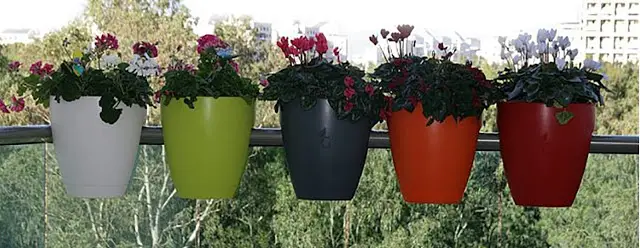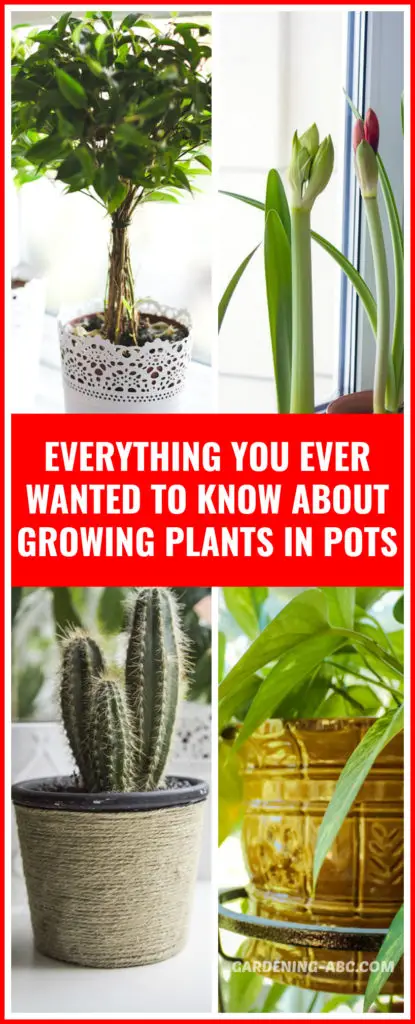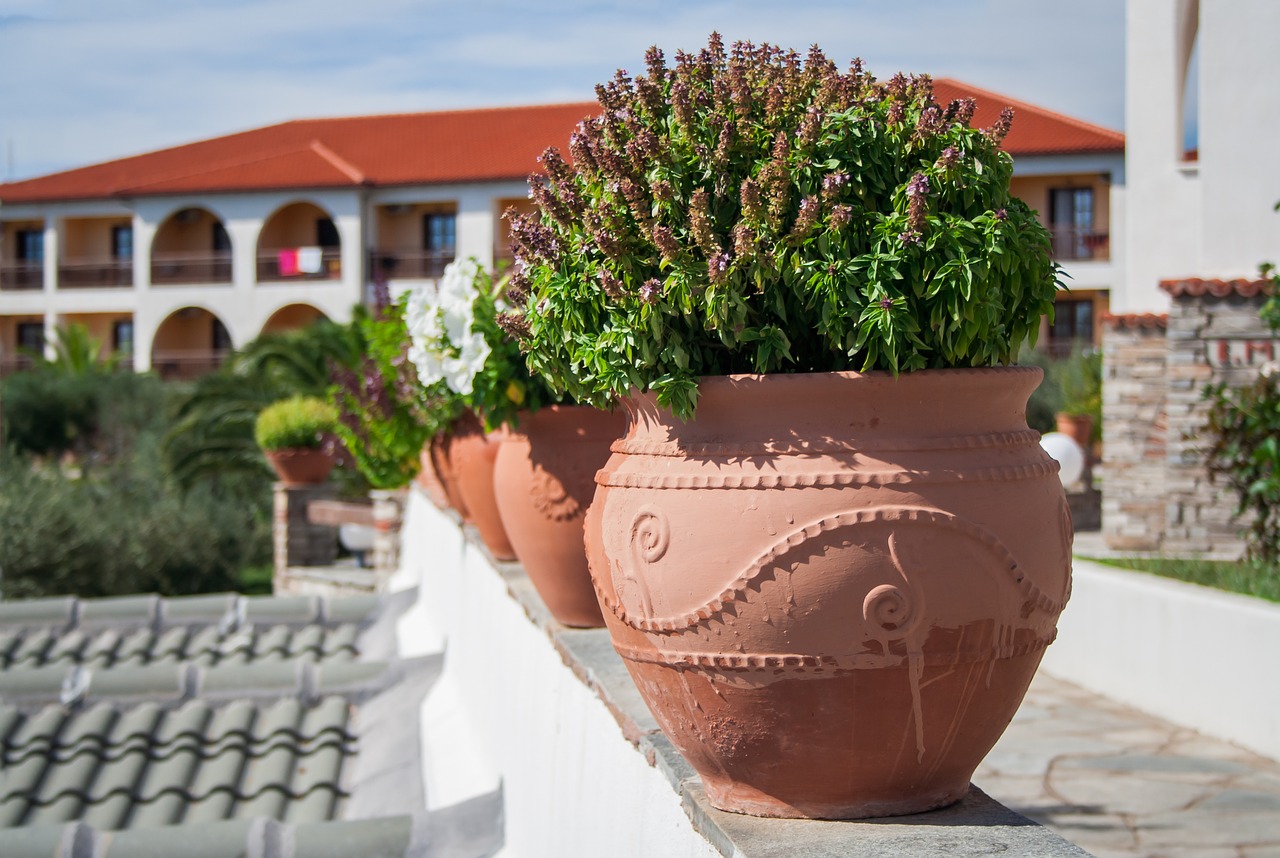We use affiliate links to run our site. When you buy through links on our site, we may earn an affiliate commission, without any added cost to you. Learn more
Do you love plants but don’t have a lot of space? Do you want to enjoy the beauty and benefits of gardening without spending a fortune? If you answered yes to any of these questions, then container gardening is for you!
Container gardening is the art of growing plants in pots, baskets, or other containers. It’s a great way to add color, texture, and life to your balcony, patio, porch, or windowsill.
In this post, I’ll show you the basics of container gardening, from choosing the right containers and plants to watering and fertilizing them.
You’ll be amazed at how easy and fun it is to grow your own plants in pots!
What is Container Gardening?
Container Gardening simply means growing plants in containers or pots. Today, when the limitation of time and space is everyone’s utmost concern, this seems to make a lot of sense.
Especially, if you live in an apartment, Container gardening is probably the best way to do gardening.
Container Gardening vs Traditional Gardening
Benefits of container gardening. Why Grow in Containers?
Now, Container gardening is a little different from the traditional way of doing gardening, i.e., planting in direct soil. Here are a few inherent benefits of container gardening:
- It can be the best gardening option for beginners. Even a rookie can start gardening in very little time.
- Container gardening can be very economical. You don’t have to waste a lot of time and money like that
in a normal garden. - When you grow in a pot, you can save a lot of costs that involved the preparation of the soil bed, weeding, fertilizing, finding a suitable area for gardening, etc. You can start just with a single pot, a little bit of soil or soilless mix, and some seeds or just one or two seedlings.
- You don’t need a big space to do container gardening. You can use your terrace, balcony, doorsteps, windowsills, etc., to grow fresh nutritious vegetables. Just make sure you are getting ample sunlight there.
- Growing in a pot liberates you from geographical restraints (a very common phenomenon in the traditional garden). You can grow any plant anywhere in the world which earlier was never thought of. As they say, “You can grow Cactus in Alaska” by using the container gardening method.
- There is almost no plant that you cannot grow in a container. Vegetables, herbs, flowers plants, and even trees can be grown through container gardening. You just need a container of the appropriate size.
- Portability is another big advantage of container gardening. Bring your plants to the study room while teaching your child Botany to give some live examples. Bringing plants inside the room also increases air quality.
- And finally, if you have space constraints, “Growing in pots” is the best available solution to your problem.
As I am writing this article, the popularity of container gardening has exploded throughout the world.
Plant breeders are continuously creating special breeds of plants that are suitable for growing in containers. You can easily see plants in different pots and containers from lawns of bungalows to the rooftops of urban apartments in every country. Those have given an entirely different color and texture to the landscape.
So if you found yourself interested in pursuing container gardening, I would encourage you to read on. The container gardening process is very similar to that of traditional gardening with a bit of fine-tuning.
Poor soil, lack of space are no longer an excuse for abandoning Gardening. Click To TweetHow to Choose a Container?
The first thing you need to start a container garden is to find a suitable container. Different people prefer different types of containers. You can use almost anything in the world from clay, wood, plastic, or metal. But make sure the pot has the followings:
- It should be big enough to support the plants in their mature state.
- Can hold soil/potting mix without any spill.
- Has proper drainage, like some holes at the bottom.
- It is never used to keep any toxic substances.
Fabric Grow Bags with Strap Handles ideal for Planting and Nursery Garden
Pro tip: As they say in the case of container gardening “size does matter”. Try not to use a container smaller than 12’’. Even a five-gallon plastic bag can be used as a container to start gardening.
Growing media for container gardening:
Growing media has the utmost importance in container gardening. You just can not use the normal soil* from your backyard to grow plants in pots.
The bad qualities of a particular soil type are exaggerated when they are put in containers. Try to use quality potting soil or make your own by using different soil-less media which I have discussed earlier.
The ideal growing media for containers have to be fairly lightweight at the same time full of nutrients. One of the possible solutions is to use soilless media.
Read our earlier article on different soilless media.
What plants to grow in container gardening?
The selection of plants for your containers also depends on the location of your pot. Sunlight plays an important role in plant growth. Is your spot receives direct sunlight for most of the day?
If you are planning to grow leafy vegetables or root crops you might not need much sunlight. But if you need fruits you have to arrange for direct sunlight.
You can check the effect of sunlight on the growth of different plants in my earlier article.
Fertilizing the plants in Pots:
The source of nutrition is limited inside the containers. If you use a soil mix with added fertilizer, then your plants will have enough nutrients for eight to ten weeks. If you want to grow plants longer than this, you need to add fertilizers from time to time.
Try to use organic fertilizers (like compost or fish emulsion), as it will benefit you in the longer run. If you are using fertilizers from the market then never add more than the recommended amount.
Container plants do not have the buffer of large volumes of soil. So over-fertilizing or over-liming can quickly kill the plant.
Exotic Pebbles For your Garden
Planting in containers:
The season for planting in a pot is no different from planting in a normal garden. Plant the veggies at the same time you plant them in a regular garden. After filling the pots with your preferable potting mixture, Use the instructions mentioned in the seed packet to sow the seeds**.
After sowing the seeds gently soak the potting mix with water. Make sure you don’t overwater. Once you find a couple of leaves have emerged from the seeds, start thinning.
Tip: In case your plants need support (cages or stakes) in later stages, provide them now. It will limit the root damage.
How to Water Plants in Pots?
Watering plants in pots. is quite different from watering a plant in a regular garden.
As the volume of the soil (potting mix) in a pot is very small compared to the regular garden, it can dry out pretty quickly. Also, there is no source of water that the roots can reach.
Due to these limitations, you may need to water plants daily or even twice a day. Also, remember that the soil should not become soggy. Soggy soil can cause root rotting particularly if the weather is cooler.
Always water the plants until it runs out of the drainage holes. Also, make sure the pot never gets in direct contact with the drainage water. The smaller the pot the more frequent should be the watering.
If you use clay pots you might need to water more frequently than in plastic or metal pots. This is due to the fact that clay pots allow more evaporation from their walls.
Things you can do to limit your labor of watering:
- Use mulch.
- Install windbreaks.
- Use a self-watering system.
- Group the pots together. This will create a canopy and reduce the evaporation from the soil.
Simple Tips for a Successful Container Gardener:
- Vegetables like carrots, radishes, or lettuce use very little space so they are ideal for growing in pots.
- Grow plants such as tomatoes or peppers. They bear fruits over a period of time.
- Use reflective materials such as aluminum foil, or marble chips around the plants to increase the available sunlight for the plant.
- You can create a cool shady apartment balcony using planter boxes with trellises.
- Make a dull patio colorful by adding barrels of cherry tomatoes or a mix of colorful herbs.

Hanging Flower Pots Ideal For Home Decoration
Final Thoughts:
I hope you enjoyed this post. If you found this helpful, please share it with your friends and family who might be interested in growing their own plants. You can also explore more articles on this site to learn more about gardening tips and tricks.
And finally, don’t forget to take action: get some pots, soil, seeds, or plants, and start your own container garden today.
I am a strong believer in the “slow but steady” style of growth. So I suggest, starting with the small, and then with continuous growth, going for the bigger goals.
Start your container gardening with plants that are easy to grow, like tomatoes, peas, eggplants, etc. Then move up to the higher difficulty level such as squash or melons.
Container gardening is a fun and rewarding hobby that anyone can do, no matter how much space you have.

Amazon and the Amazon logo are trademarks of Amazon.com, Inc, or its affiliates.

Hi there! My name is Prasenjit and I’m an avid gardener and someone who has grown a passion for growing plants. From my hands-on experience, I have learned what works and what doesn’t. Here I share everything I have learned.

